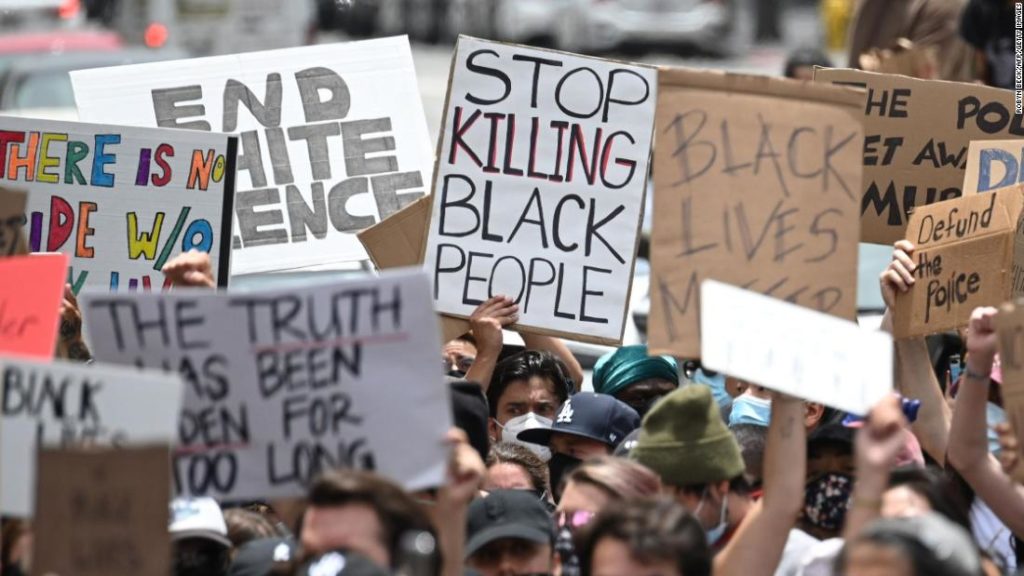“Let us be clear, this was a domestic terror attack perpetrated by riotist mobs of White supremacists, armed equipped and many skilled in police and military tactics who came to overturn an election in which their candidate Trump lost,” Rep. Joyce Beatty of Ohio and chair of the Congressional Black Caucus said in the group’s hearing.
“Madam Speaker, St. Louis and I rise in support of the article of impeachment against Donald J Trump. If we fail to remove a White supremacist President who incited a white supremacist insurrection, it’s communities like Missouri’s First District that suffer the most,” Bush said during her speech.
People marched by the thousands in both after believing that a wrong had been done to them. The calls for racial justice across America over the summer were backed by the deaths of George Floyd, Breonna Taylor and the pain of following generations of anti-Blackness sentiment. Unlike BLM protests, the insurrection at the Capitol was triggered by lies and deeply rooted racist stereotypes, experts say.
Here’s a look what’s driven the Black Lives Matter movement for nearly a decade and why Trump supporters broke into the Capitol:
False and debunked claims drew thousands to the Capitol
After weeks of hearing false claims that the presidential election was rigged, Trump supporters flocked to Washington to fight against the ceremonial counting of the electoral votes that would confirm President-elect Joe Biden’s win.
“The mob was met with empathy and deference from some in law enforcement and some in a military establishment that harbors White supremacists, let’s say it, amongst its own ranks,” Morial testified at Congressional Black Caucus hearing in response to the riots.
After the election, Detroit, Milwaukee, Philadelphia and Camden, New Jersey, were among the cities the Trump campaign had falsely accused of voter fraud and corruption. These cities are either majority Black or have large Black populations.
Rioters believed a narrative deeply rooted in racist stereotypes that has been consistent throughout Trump’s administration and used by other politicians in the past 50 years, according to Haney López, who is a law professor at the University of California, Berkeley.
“Mainly what they’re trying to trigger is a sense that dangerous persons of color are coming to take over the country,” Haney López said.
“They believe it because in their hearts it feels true that this multi-racial coalition is taking power,” he added. “It’s just wrong to them that Black people in coalition with Latinos and Asian Americans and Whites should take power.”
He claimed the “real problem” is what other politicians said about protests over the summer in Seattle and Portland, Oregon.
A global rallying cry for Black lives
What started as a hashtag became a website, an organization and later grew into more than a dozen local chapters across the US and Canada. They were driven by the series of deaths of Black Americans at the hands of police and vigilantes.
“We live in a country built to keep us away from these resources that we need,” says Kailee Scales, managing director of the Black Lives Matter Global Network. “Folks in the movement have been consistently fighting to reverse that trend, to raise awareness that this is not the way we’re supposed to live.”
“You know, for many of us in this country, we know what it is to be treated differently. And we also know what it is to be told that all of the things we experience every single day don’t exist or that if they do exist that it’s our fault (and) that we somehow created the conditions of inequality,” said Alicia Garza, who co-founded the Black Lives Matter Global Network with Patrisse Cullors and Opal Tometi.
People marched against police violence, systemic racism, to be seen and heard.
Last week, Trump supporters were criticized on social media after using another phrase that has been known as a racial justice call for years.
You may also like
-
UK coronavirus variant has been reported in 86 countries, WHO says
-
NASA technology can help save whale sharks says Australian marine biologist and ECOCEAN founder, Brad Norman
-
California Twentynine Palms: Explosives are missing from the nation’s largest Marine Corps base and an investigation is underway
-
Trump unhappy with his impeachment attorney’s performance, sources say
-
Lunar New Year 2021: Ushering in the Year of the Ox

